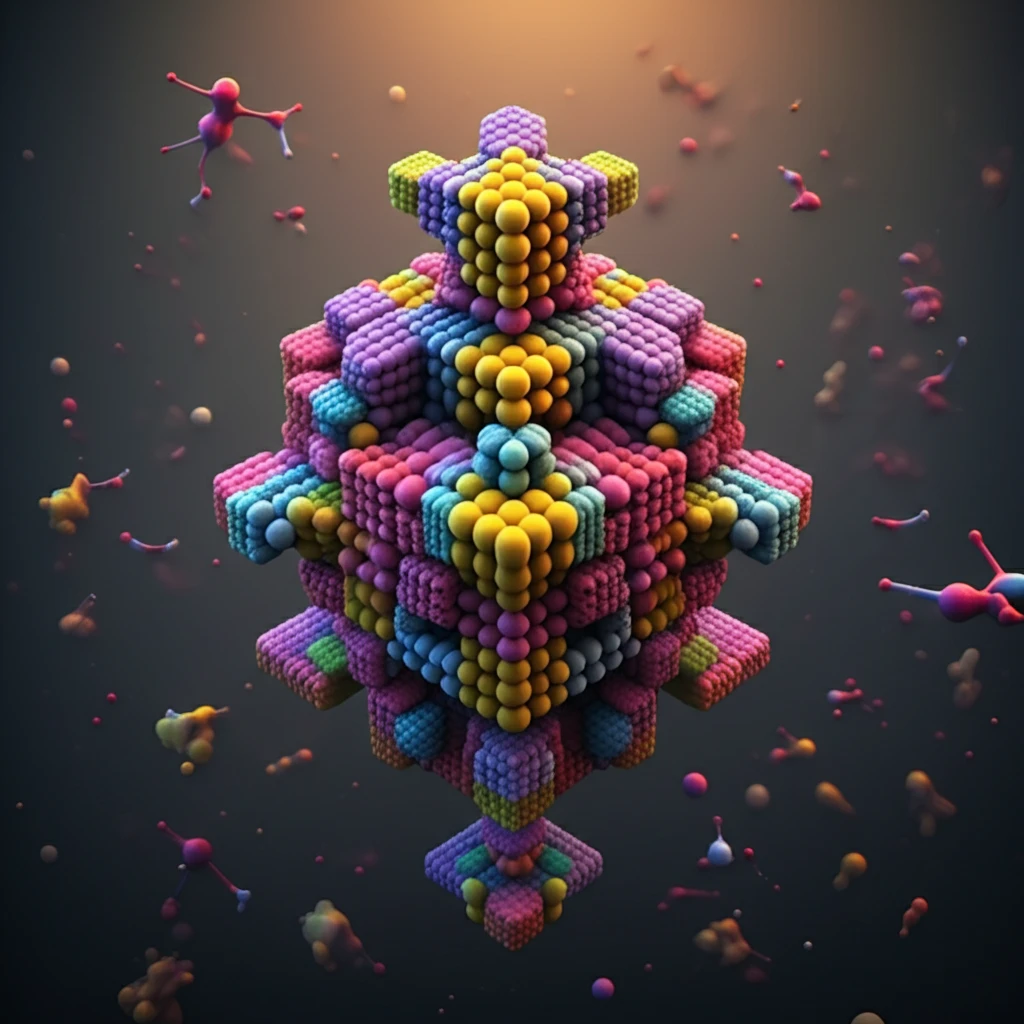
Janus Dumbbells: The Unlikely Heroes of Next-Gen Materials?
"Unraveling the self-assembly of hetero-cluster Janus dumbbells could revolutionize hybrid cubosomes with unique internal structures."
Molecular self-assembly, a process where molecules organize themselves into complex structures, is a cornerstone of nanotechnology. Scientists and engineers are constantly seeking new ways to harness this phenomenon to create materials with unprecedented properties and functions. One promising avenue of research involves the use of amphiphiles, molecules that have both water-loving (hydrophilic) and water-fearing (hydrophobic) parts, which can self-assemble into diverse structures like micelles and bilayers.
Among the fascinating structures formed by amphiphiles are bicontinuous cubic liquid-crystalline phases, characterized by intricate 3D networks of nanochannels. These phases have attracted significant attention due to their potential applications in various fields, including drug delivery, catalysis, and materials science. However, constructing these complex structures with precise control over their properties remains a challenge.
Now, imagine taking inspiration from both lipid self-assembly and the unique properties of clusters—molecules with well-defined arrangements of atoms—to create a new class of materials. This is precisely what researchers have done by designing and synthesizing hetero-cluster Janus dumbbells (HCJDs), molecules composed of two dissimilar nanoclusters connected by an organic linker. These HCJDs, resembling amphiphiles, self-assemble in solution to form faceted hybrid cubosomes with internal double diamond structures, opening up new possibilities for advanced materials design.
What are Janus Dumbbells and How Do They Self-Assemble?

The researchers synthesized hybrid molecules from polyoxometalate (POM) and polyhedral oligomeric silsesquioxane (POSS) nanoclusters using organic linkers. POMs are known for their solvophilic nature, dissolving well in polar solvents, while POSS clusters prefer weakly polar or nonpolar environments, making them solvophobic. By connecting these dissimilar clusters with organic linkers, the researchers created HCJDs with amphiphilic character.
- Molecular Self-Assembly: The HCJDs spontaneously form vesicles.
- Vesicle Accumulation: Vesicles cluster together to create larger aggregates.
- Membrane Fusion: Vesicles merge, altering the overall structure.
- Inner-Structure Reorganization: The internal arrangement shifts from foam-like to sponge-like and, ultimately, to a double diamond structure.
- Cubic Crystal Growth: The ordered nanostructure grows, leading to faceted cubosomes.
The Future of Self-Assembling Materials
This research provides a powerful strategy for creating complex materials with tailored properties through the self-assembly of HCJDs. By carefully controlling the interactions between the nanoclusters and the solvent environment, researchers can manipulate the formation of specific nanostructures and unlock new possibilities for advanced applications. The discovery of the double diamond structure within the cubosomes also opens avenues for designing materials with unique optical, electronic, and catalytic properties. From drug delivery systems to advanced sensors, the potential applications of these self-assembling materials are vast and exciting.
